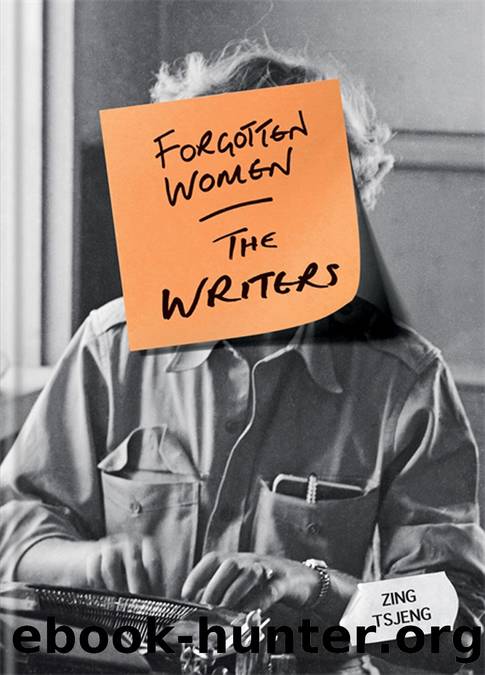Forgotten Women : The Writers (9781788401159) by Tsjeng Zing

Author:Tsjeng, Zing
Language: eng
Format: epub
Publisher: Hachette Book Group USA
Published: 2018-09-07T00:00:00+00:00
SEI SHÅNAGON
ometime around the year 1000 â about the same time that Murasaki Shikibu was writing The Tale of Genji â Sei ShÅnagon (c. 966â c. 1017/25) was creating a very different literary work in the Japanese imperial court. It is now known as The Pillow Book, and its would-be author had modest aims: âI merely wrote for my personal amusement things that I myself have thought and felt, and I never intended that it should be placed alongside other books and judged on a par with them.â25
Murasaki, her fellow lady-in-waiting, sniffed that her rival was âdreadfully conceitedâ,26 adding that âpeople who have become so precious that they go out of their way to try and be sensitive in the most unpromising situations, trying to capture every moment of interest, however slight, are bound to look ridiculous and superficial.â27 True, The Pillow Book is a very different beast to The Tale of Genji. The work has been described as a pastiche, and it certainly is something of a delightful mess, with intimate diary entries and memories of courtly life veering off into charming lists of her likes and dislikes and opinions.
But it was in attempting to capture every fleeting detail of her era â from her stylish gentlemen callers right down to her everyday annoyances â that Sei ShÅnagon hit on something true and eternal. Itâs easy to feel like Heianera Japan is not so far away from our centuryâs own social foibles when Sei is tartly describing her list of âinfuriating thingsâ,28 such as âa guest who arrives when you have something urgent to do, and stays talking for agesâ or âsomeone who butts in when youâre talking and smugly provides the ending herselfâ, or when she recounts the dispiriting nature of âthose times when you send someone a poem youâre rather pleased with, and fail to receive one in replyâ.29 (Ghosting, anyone?)
We know very little of Seiâs background. âShÅnagonâ denotes the rank of junior councillor, while Sei is short for her family name of Kiyohara. As the daughter of a minor governor, Sei was already in her late twenties when she was yanked from the provinces to serve the Empress Teishi in 993, and she was a devoted lady-in-waiting up until the death of her mistress in childbirth in 1000. After that, there is precious little trace of Sei in official records. She was once married, but we do not know the name of her husband. She took several lovers at court, and The Pillow Book records her judgment on their hopeless bumbling: âI do wish men, when theyâre taking their leave from a lady at dawn, wouldnât insist on adjusting their clothes to a nicety, or fussily tying their lacquered cap securely into place,â she sighed. âOne does want a loverâs dawn departure to be tasteful.â30
Sei also claimed that she began The Pillow Book by a sheer accident of fate. A palace minister had presented her Empress with a rare bundle of spare paper, which was in turn gifted to her.
Download
This site does not store any files on its server. We only index and link to content provided by other sites. Please contact the content providers to delete copyright contents if any and email us, we'll remove relevant links or contents immediately.
Melania and Me by Stephanie Winston Wolkoff(1031)
The Class of 83 by Hussain Zaidi(965)
Live in Love by Lauren Akins & Mark Dagostino(948)
Dancing in the Mosque by Homeira Qaderi(920)
Orlando by Virginia Woolf; Mark Hussey(885)
A History of My Brief Body by Billy-Ray Belcourt(880)
Just as I Am by Cicely Tyson(724)
Stranger Care by Sarah Sentilles(722)
The Schoolgirl Strangler by Katherine Kovacic(720)
Robespierre: A Revolutionary Life by Peter McPhee(710)
Virginia Woolf by Between The Acts(710)
Unforgetting by Roberto Lovato(702)
Ariel (english and spanish Text) by Sylvia Plath(693)
1914 by Luciano Canfora(691)
Broken Horses by Brandi Carlile(690)
Paris Without Her: A Memoir by Gregory Curtis(687)
Harriet Tubman: The Biography by University Press(683)
One Life by Megan Rapinoe & Emma Brockes(678)
Berlin Diary: The Journal of a Foreign Correspondent 1934-41 by William L. Shirer & Gordon A. Craig(678)
